Custom Store Project
Design and launch a bespoke store.


 Nic Dunn |
CEO - Charle Agency
Nic Dunn |
CEO - Charle Agency
Founded in Canada, Shopify revenue for the first three quarters of 2024 was $6.068 billion, a 2.56% increase year-over-year. Shopify annual revenue for 2023 was $$7.06B, a 26.07% increase from 2022 which shows continued growth across the world-leading ecommerce platform. The platform has shown growing success since it's launch and continues to receive year-on-year revenue growth.
(Macrotrends - Shopify Statistics)

Total revenue in the third quarter grew 20.7% to 2.161 billion YOY compared with Q3 2023 with revenue of 1.714 billion, which represents a two-year compound annual growth. The third quarter of 2024 marked the highest revenue growth in the company's history as a public company driven by it's focus on enterprise business. Shopify merchants are emerging from the last two years stronger and better prepared for commerce everywhere. Shopify announces quarters performance on it's news site.
(Shopify - News)
Shopify’s growth rate in 2024 was around 20%, nearly three times the global ecommerce growth rate of around 8.4%. This shows the power of the platform and how Shopify's technology is truly an industry leader. This can be an indication that the business is performing exceptionally well and is on the path to continue to outpace the growth of the global ecommerce industry as a whole.
(Statista)
Shopify total number of employees in 2024 was 8,400, a 28.45% decline from 2023. Shopify staff work remotely all over the world. Shopify market share and Shopify sales can be thanked to Shofy's employees who manage the Shopify platform day in day out every year.
(Macrotrends) - Statistics
In March 2020, Shopify sellers generated more than $319 billion in global economic impact. Together, Shopify merchants would make up the 7th largest company in the world in terms of revenue, above Apple, BP, and Volkswagen. Shopify has enabled brands to sell in ways that historically have not been as easily available which has allowed it's merchants to make a huge impact.
(The Social Shepherd - Shopify Statistics)
In 2023, there are more than 13,000 live Shopify Plus stores that leverage the benefits that Shopify's enterprise level platform offers with almost 1,000 of those being based in the UK. The use of desktops over mobiles is changing and buying habits are too, with the rise of social media networks fuelling traffic from mobile devices it's no wonder than more customers are buying from handheld devices.
(Shopify) - Top Shopify Statistics
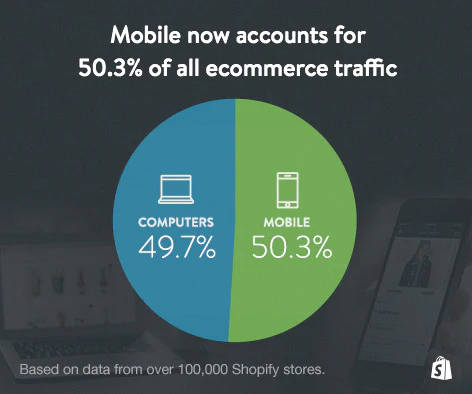
It's expected that 675 million buyers will purchase through a Shopify store in 2024. It is predicted that Shopify merchants will have over 700 million customers in 2025 as more merchants grow within the platform and also as existing Shopify powered brands see record growth. The majority of online store shoppers are also becoming familiar with the experience of Shopify's recognisable checkout process.
(Demand Sage)
Shopify store owners saw Black Friday and Cyber Monday (BFCM) ecommerce sales activity soar to 11.5 billion dollars, the highest on record, a 24% increase in sales from 2023. 76+ million consumers worldwide bought from Shopify-powered brands. 16,500+ entrepreneurs made their first sale on Shopify. More than 67,000 merchants had their highest-selling day ever on Shopify. Compared with 2019 where Shopify generated more than $2.9 billion in sales on Black Friday and Cyber Monday.
(Shopify) - Shopify BFCM Stats

Every year the total sales through a Shopify store typically grows and 2024 BFCM saw more than 76 million consumers buying from a Shopify powered ecommerce store compared with 23 million in 2019.
(Shopify) - Shopify BFCM Stats
In 2024, there are more than 45,000 live Shopify Plus stores that leverage the benefits that Shopify's enterprise level platform offers with almost 3,200 of those being based in the UK. Gross merchandise volume / gross profit grows higher typically with Plus brands including brands such as whole foods market. During the pandemic Shopify saw huge growth with shoppers spending more online and more brands required an enterprise solution with Shopify Plus. Shopify Plus is the ultimate enterprise solution for scaling brands - let us know if you are interested in upgrading.
(BuiltWith) - Shopify Statistics
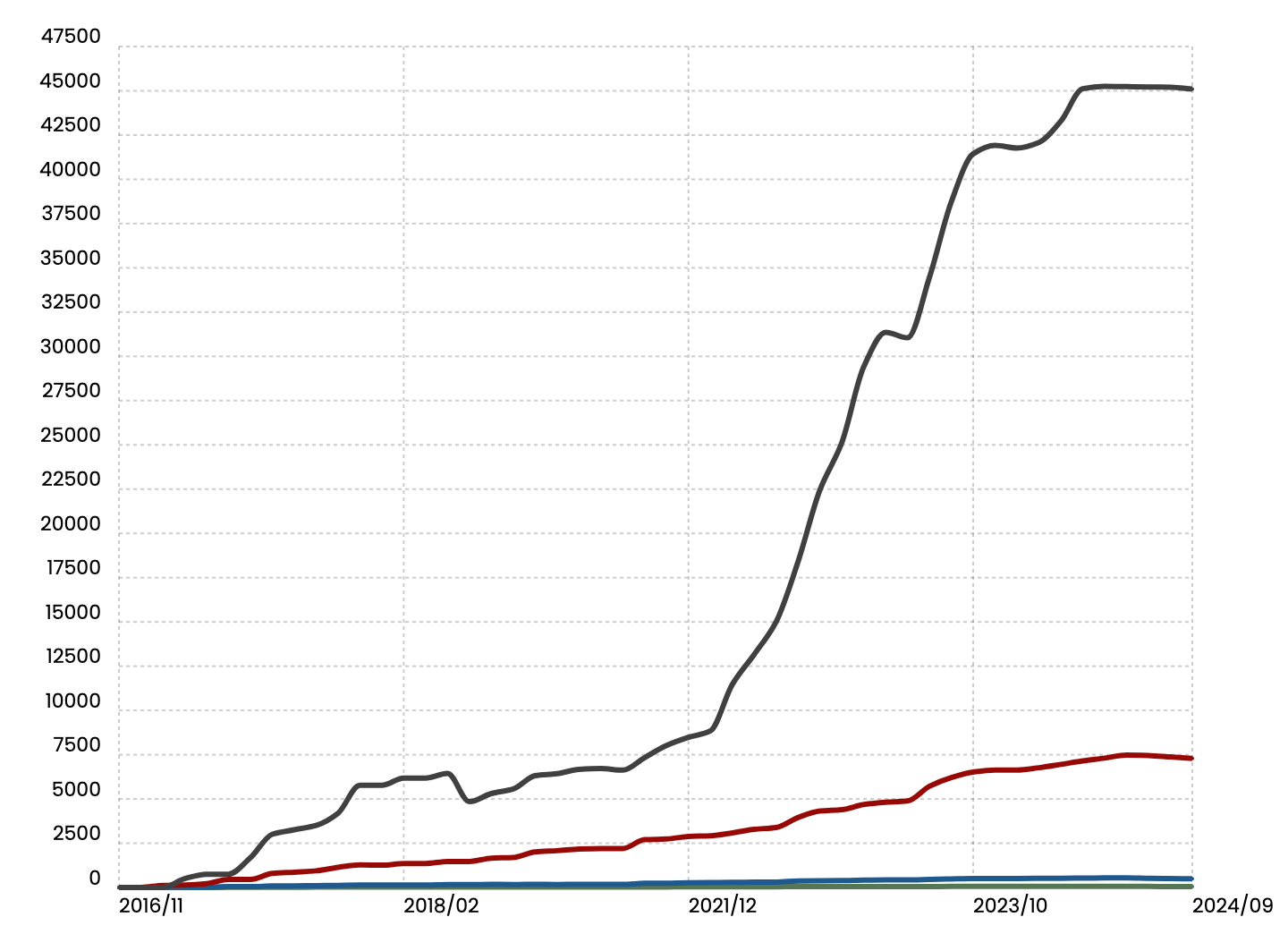
Most online shops created through the e-commerce platform Shopify sold clothing products and category collections. As of June 2024, 528 thousand Shopify stores operated in the clothing segment. Home and garden had the second largest offer, at 229 thousand shops. 198 thousand stores sell beauty products. We do however see changing trends over the top sold products on Shopify based on consumer habits at the time.
(Statista) - Shopify stores by category
It appears that most Shopify customers like nothing more than a good T-shirt or a top. Other popular best-selling goods on the shopping platform include vitamins, books, mobile phone cases, and shoes, according to Shopify product stats. Things you can sell on Shopify are limitless, if you can find sources of anything to sell you can likely sell it and make money.
(Shopify) - Top Online Shopping Categories
Shopify Plus is the enterprise version by Shopify that offers extra features and support tailored for fast growing, high revenue brands. You can learn more about Shopify Plus on our dedicated "benefits of Shopify Plus" article. There is a higher fee but it does come jam packed with great features. Brands are using shopify as their central admin as it connects to other platforms such as ebay and youtube.
(Shopify Plus)
>Some of the biggest Shopify stores report having annual revenue of anywhere between $1 million and $500 million. This goes for some of the more serious businesses that decided to invest an extra buck into Shopify Plus.
(Aquire Convert) - Shopify Statistics
An average a Shopify store makes around $5,583 USD per month. We've seen merchants focusing on retention strategies to keep their customers coming back and spending again to minimise aqustition costs.
(Folio3) - Statistics
In the third quarter of 2024, the total Shopify Stores Increased by around 20% compared with the previous quarter. Shopify continues to grow taking more and more market share of ecommerce stores globally. Shopify continues to use everything it can and keep using resources to invest into the platform with new features and growth.
(Built With) - Shopify Usage
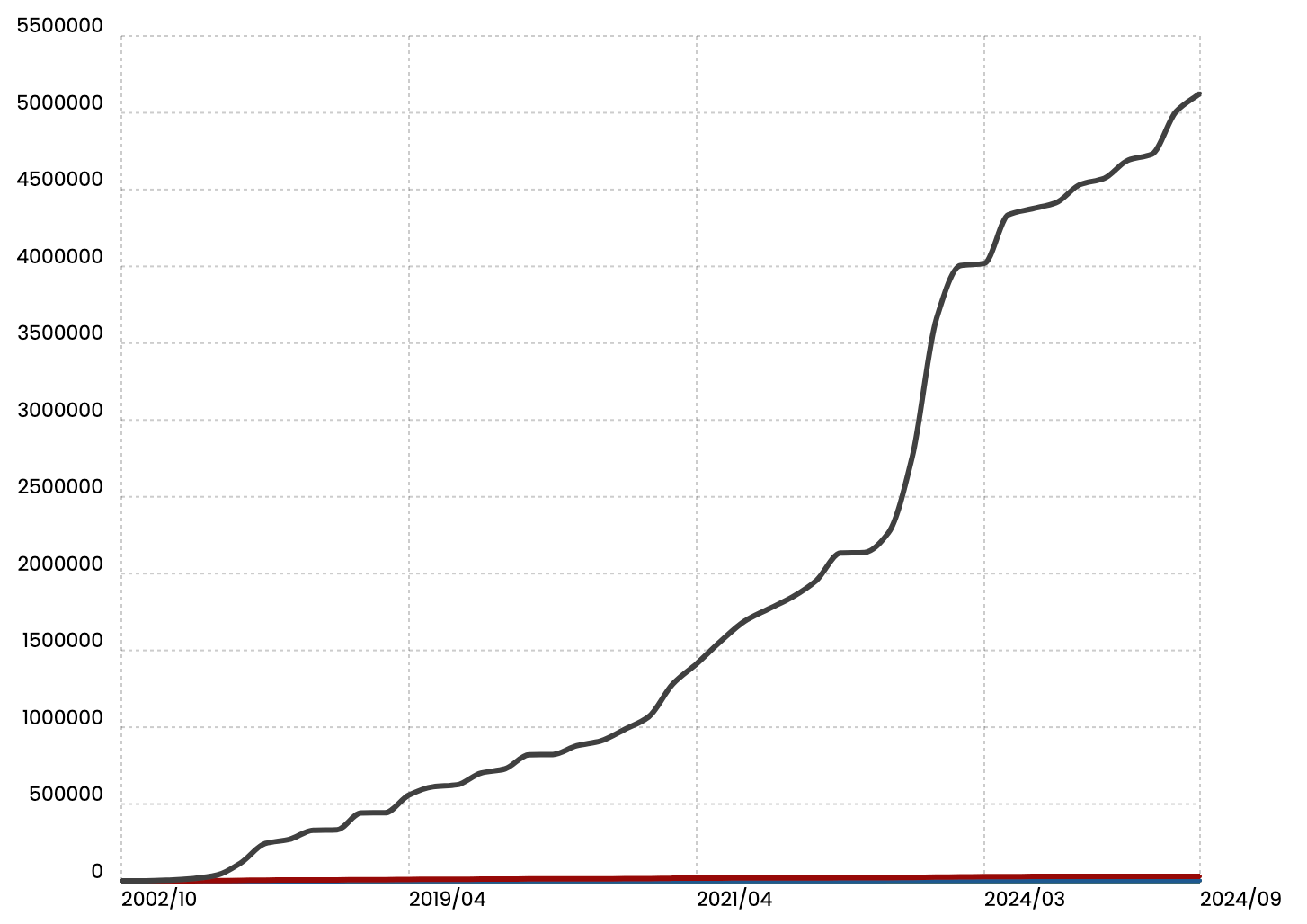
Businesses built on Shopify experienced a 25 percent increase in online sales in 2024, in comparison to the expected 8 percent increase experienced by the global e-commerce market. Shopify is a Canadian e-commerce company that offers e-commerce software platform to online stores. The platforms usage statistics is also easy for brands to keep their stores up to date.
(Shopify) - Global Ecommerce Sales
Customer retention rates vary significantly across different industries, typically ranging between 70% and 80%. However, these averages can fluctuate widely depending on the specific industry in question.
(Shopify) - Average Customer Retention Rates
Littledata surveyed and asked questions to 2,800 Shopify stores in September 2022 and found the average conversion rate for Shopify was 1.4%. Bare in mind that conversion rates vary hugely between industries. You can use learn more about Shopify's conversion rates on their article.
(LittleData)
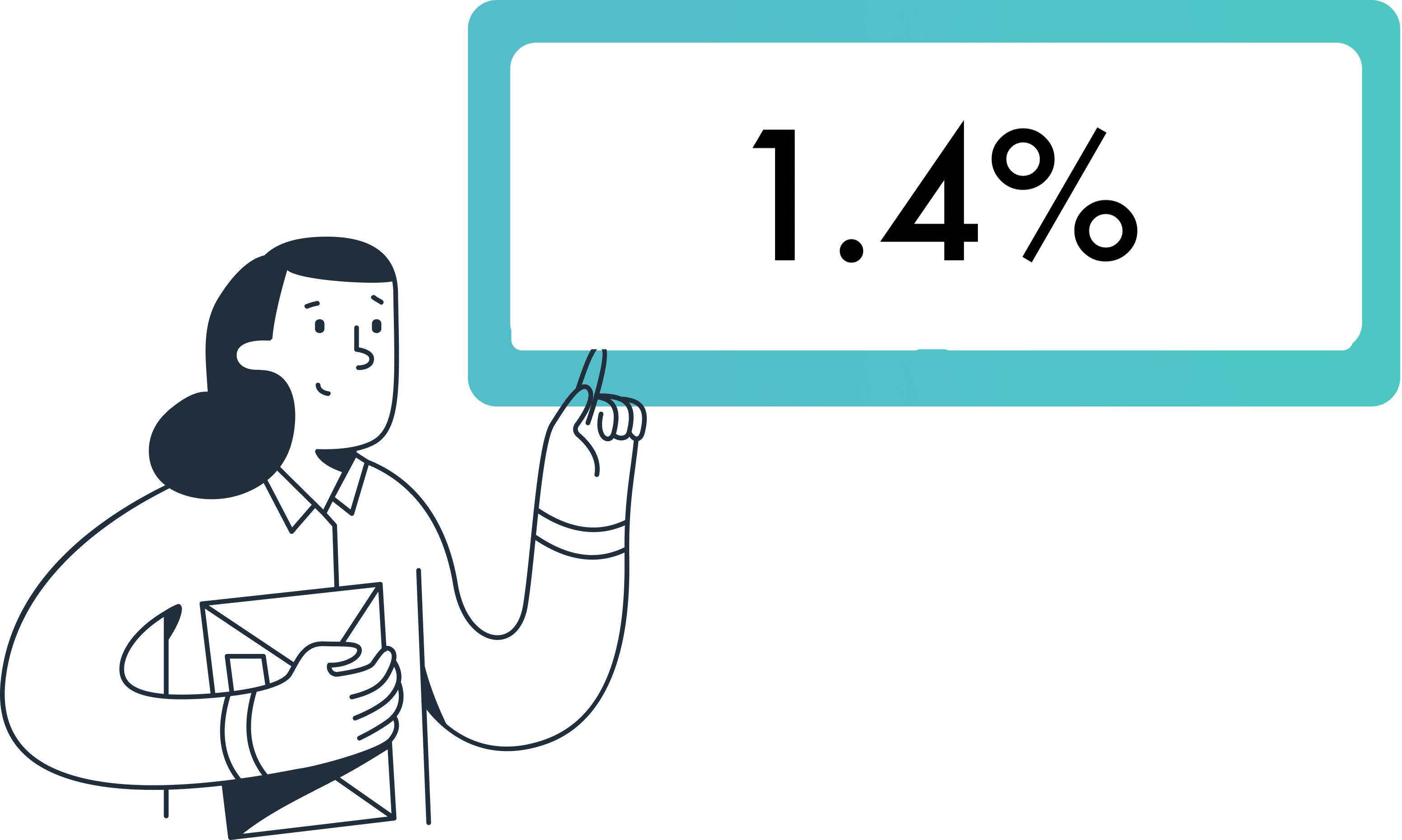
While UK-based AOV numbers on Shopify are hard to come by, Dynamic Yield reveals some encouraging statistics about how much people are spending on average. According to a global average across a multitude of industries, the average spend for ecommerce orders is $144, around £114 in sterling.
(Dynamic Yield) - Average Order Value
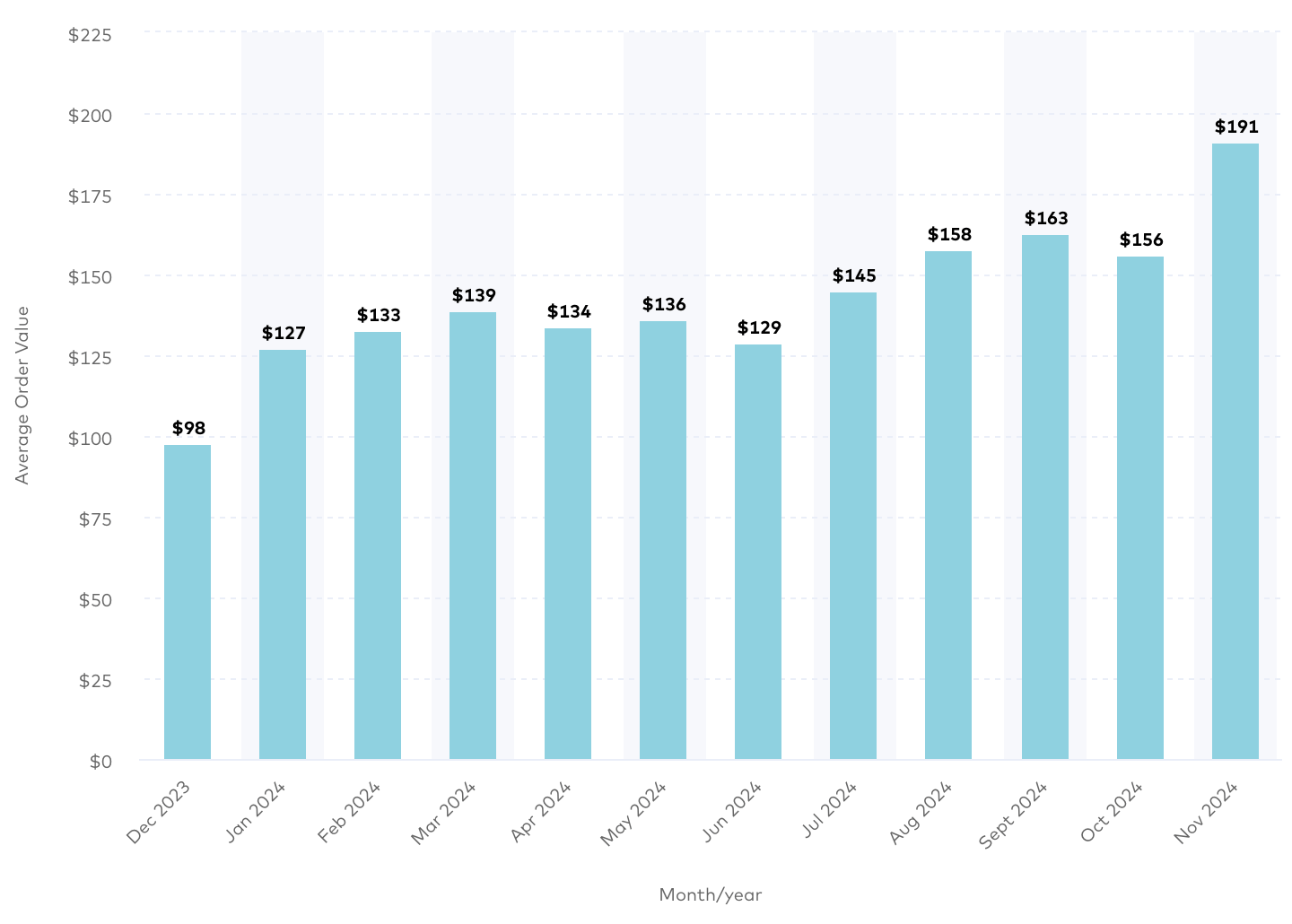
BuilWith reports in 2023 that there are almost 5.1 million Shopify stores across 175 countries. The countries with the most stores include United States, United Kingdom, Canada, Australia, Brazil, Germany, France, India, Italy and the Netherlands.
(BuiltWith) - Shopify Usage
Around about 56% of the online shops using Shopify have been created by merchants based in the USA. In fact, about two-thirds of Shopify stores are based there. In February 2023 the USA had almost 3 million stores. The UK follows with around 209 thousand Shopify stores and Australia in third place with 152 thousand stores.
(BuiltWith) - Shopify Usage
As of September 2024, Shopify was the biggest name in the U.S. e-commerce software market, used by roughly 30 percent of websites that use e-commerce technologies. The market’s other major competitors include Wix Stores, WooCommerce Checkout, and Squarespace Add to Cart, each of which boasts a market share of at least 11 percent.
(Statista) - Statistics
According to Built With there have been over 8.8 million Shopify stores live since it's launch, this number includes both current live Shopify stores and also historical stores that are no longer live.
(BuiltWith) - Statistics
According to Demand Sage, in 2024, more than 1 in 4 of the 2.71 billion people who are expected to shop online will likely purchase from a Shopify store.
(Demand Sage) - Shopify Statistics
Shopify Holds 21% of the Market Share in the UK With coming second with around 13K less ecommerce stores powered by Wordpress & Woocommerce than Shopify, however it has been argued Shopify is used by high revenue brands. Other platforms include Magento and Salesforce.
(PageFly) - Statistics
According to technology tracking tool Built With, in 2024 there were over 209 thousand ecommerce stores live in the United Kingdom that use Shopify to power their store this has been fast growing over recent years.
(BuiltWith) - Statistics
57.6% of UK-based Shopify stores use Instagram ads, post content and more to grow their stores. Facebook comes second at 51.5% and Twitter ranks third at 22.3%.
(Storeleads) - Top Stores

Amongst a large library of Shopify apps on the Shopify app store, merchants can easily extend the features of their store with ease. Shopify partners reports over 80% of merchants use an app within their Shopify storefront. The amount and variety of apps within Shopify grows every month thanks to innovative app developers that look for ways to create new and inspiring experiences for ecommerce websites. There is a large partner community of developers building amazing apps to allow anyone to improve and deliver the best shopping experience.
(Shopify Partners)
Shopify allows developers to build apps to help stores extend their functionality. Whilst it is a closed and highly monitored marketplace, there are over 8,000 Shopify apps available for download to cover a huge range of features including upselling, connecting with other platforms and some to improve the functioanlity of how Shopify works.
(Shopify App Store)
Shopify allows merchants to choose a frontend theme to control how the store looks, you can choose from 11 free themes or 107 paid themes depending on your creative requirements and personal tastes. Merchants can also source an agency like us to build an entirely custom Shopify theme.
(Shopify Theme Store)
Customers all over the world enjoy viewing content in their native country language. Considering region for customers can really help selling to them. Whether you are shopping from the UK, Europe, Germany, or China, Latin America, New Zealand Shopify stores can show the correct language. Translating stores content can lead to more sales because international customers can better understand marketing, product details, shipping, and return policies. Shopify supports 20 languages. The ecommerce market is one that requires stores to show a customised and personal online experience and language is a great way to do that.
(Shopify Support - Manual)
That was our Top 32 Top Shopify Statistics, facts and figures. Shopify is a powerful ecommerce platform that has revolutionised the way businesses sell their products online. With a wide range of features and integrations, Shopify has become a popular choice for businesses of all sizes looking to establish an online presence. Some of the most successful ecommerce industries on the Shopify platform have been clothes, fitness, food & drink, technology and home products. From New York to London, brands all over the internet use Shopify's technology to make the most out of their online store's sales performance. As a Shopify Agency, we've seen first-hand how the platform has helped businesses reach strategic goals, especially after migrating from other platforms such as Magento, Woocommerce, or Salesforce Commerce Cloud. One of the key features of Shopify is its point of sale (POS) system, which allows businesses to seamlessly integrate their online and offline sales channels. This means that businesses can easily sell their products in physical stores and online, all from the same platform using the pos system. Several successful businesses have utilised Shopify to grow their brands, including Gymshark, Tesla Kylie Cosmetics, GMV, and Staples.
In addition to its ecommerce features, Shopify also offers a variety of tools for businesses to manage their online presence. The Shopify blog provides helpful tips and resources for businesses looking to improve their online marketing, while the Shopify inbox makes it easy to manage customer inquiries and support requests. There are many reasons why businesses choose Shopify over other ecommerce platforms like BigCommerce. The platform is easy to use, offers a wide range of integrations, and provides excellent customer support. With its headquarters in Ottawa, Canada, and offices in Los Angeles and California from its expansion over the years from 2006, Shopify has a global reach and continues to surprise with new and innovative features. Looking at the Shopify users chart and table of contents, the company looks future-proofed for years to come. Shopify now positions itself with an image image of all shapes and sizes of businesses.
Shopify's incredible suite of tools gives merchants everything that they need to launch an ecommerce store with ease. Features from a range of amazing visual themes, features from the very best apps and a back-end dashboard / Shopify analytics and insights dashboard to allow you to manage your business with ease and builds the foundation of what Shopify has to offer. Shopify allows brands to scale affordable and easily with all of its architecture coming out of the box and brands can focus on growing their business and leave the technical set-up to Shopify. Brands of all sizes are choosing Shopify to power their businesses due to the relatively lower cost to market when compared to other enterprise-level solutions within the growing ecommerce markets.
In 2023, Shopify's strategic focus is on the enterprise market to double down on larger-scale brands and dissociate its link with only being good for start-up or smaller businesses. Shopify's investment into its developmental capabilities means that the flexibility of the platform is continuing to expand and allow Shopify developers to deliver the most custom and tailored Shopify experiences for both brands and customers. Online traffic is likely to continue to grow as platforms push advertising and these Shopify statistics prove that companies from countries around the globe are likely to continue their investment activity into ecommerce sales in a bid to grow revenues and monthly recurring revenue (MRR). This list of Shopify stats shows just how the platform has grown from its sites and stores that actively innovate and provide users with the best ecommerce experience possible. Whilst the COVID-19 pandemic is over and ecommerce growth is not as dramatic as anticipated, growth is still very much present and consumer behaviours are changing as is the economy to prevent loss. Shopify statistics also show that it has a significant share of the industry, with over one million active users and a total usage of mobile devices. The ability to manage orders and activity on the go has contributed to the success of the platform, also taking into account affiliates / the affiliate program, and partnerships of brands such as Pepsi, and Redbull creating demand for Shopify in general. It's no surprise why the biggest brands on Shopify have had their success. Shopify also offers competitive pricing.

